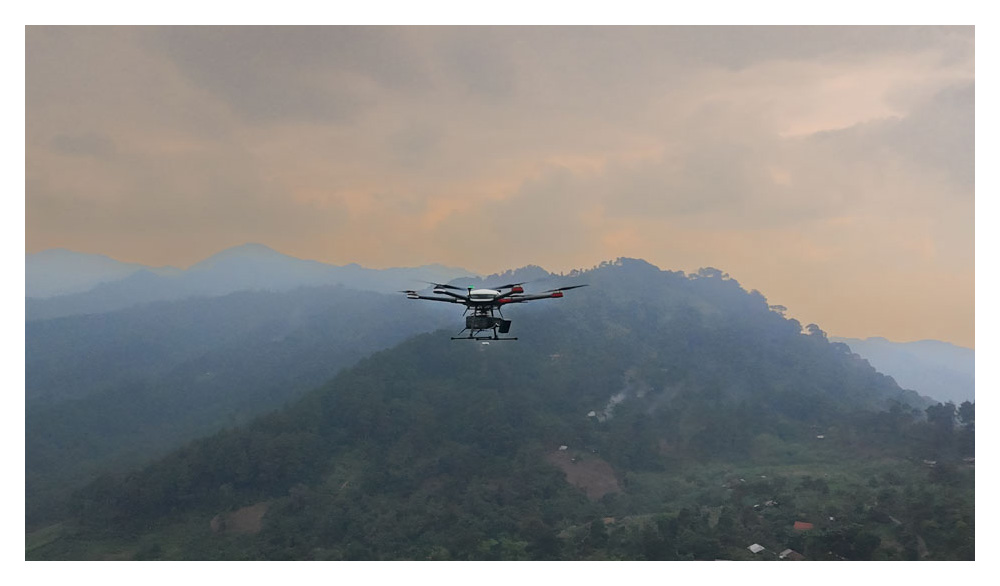UAV controlled crash landing
In field trials in a South-East Asian country this week, we have achieved cellphone registrations at 10Km range from a hexarotor drone with a 12W 4-BTS IMSI Catcher payload, weighing just 6Kg. Target acquisition and Silent Call was achieved at 4Km range. A motorised remote controlled, high gain directional antenna contributed greatly to the range performance.

We also extracted GPS co-ordinates, on UMTS (3G) from a number of devices with certain chip sets (contact us for more details on this), as well as being able to use precise heat mapping technology to accurately locate LTE devices.
The drone flew up to 500 meters AGL, both autonomously (Auto Pilot) and under manual control, and 6Km distant from the GCS (Ground Control Station). The range of the drone, with this payload is 30Km, and one hour mission life under ideal conditions, although tropical conditions with high humidity, air pressure etc., can affect these specifications.
Such performance significantly enhances the SOP for both law enforcement, surveillance and First Responder operations. This particular application is for deployment in dense tropical jungle but the same technology can be deployed at sea and on borders, both land and coastal, where cellular infrastructure is not as dense as in urban areas. The quick release mechanism used on the drone allows rapid switching of payloads, between the IMSI Catcher, and EO payloads, with both day/night and thermal payloads being operated. The EO payloads can obviously be combined with the IMSI catcher payload but the weight increase shortens the mission life.
Over a four-day test period, we even managed to crash the drone, intentionally, due to the loss of one of the rotor motors during flight, bringing it down in a controlled collision, on top of a tree to avoid a hard ground landing. With the help of local “tree climbers” we retrieved the drone and payload and we were operational again within hours, having replaced the damaged drone components. The IMSI Catcher payload suffered the loss of one small antenna which was replaced from the spare parts kit, but the payload continued to operate without issue, which is testament to our design engineers and the quality of our production team.
The benefits of this technology in Search & Rescue operations are obvious, especially in remote mountainous or coastal terrain.
SAR and LEO
SOME OF THE USERS OF DRONE IMSI



